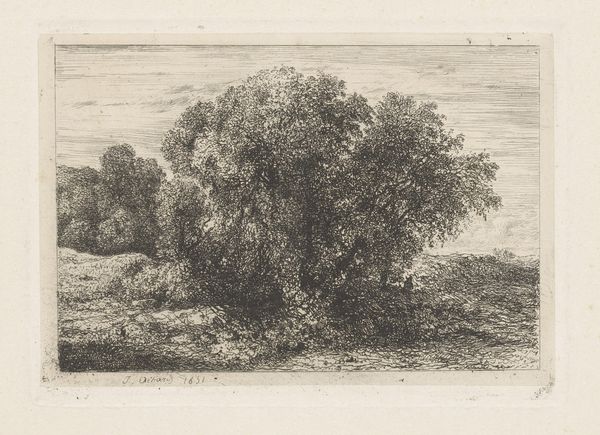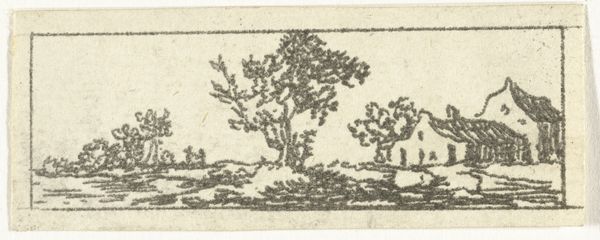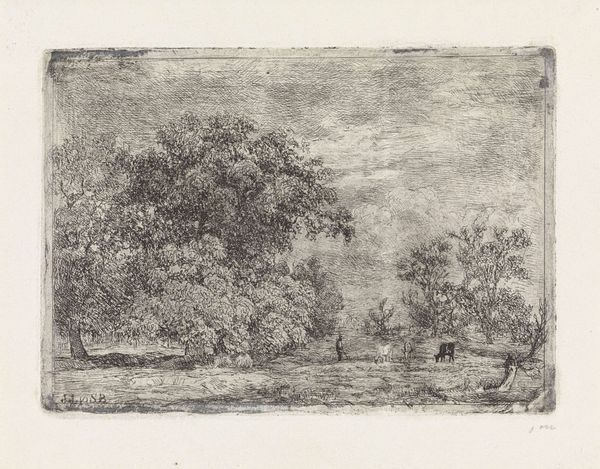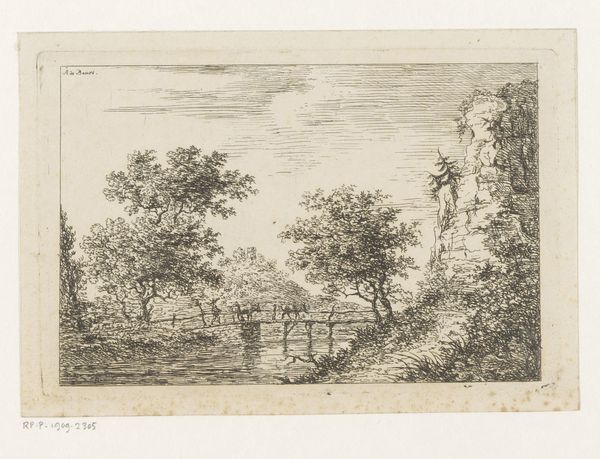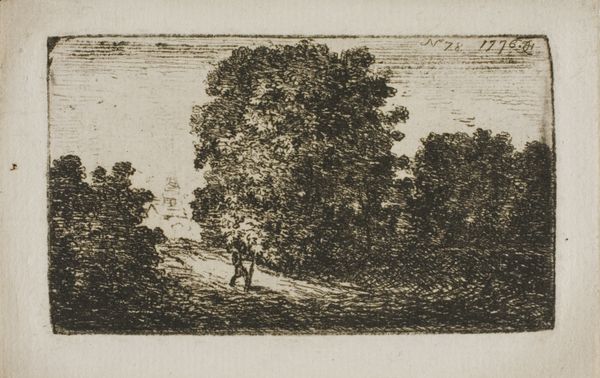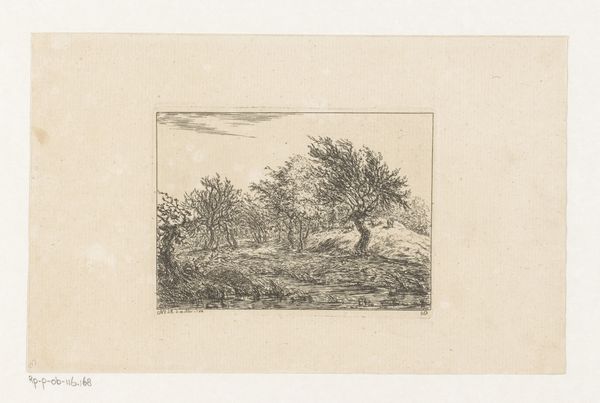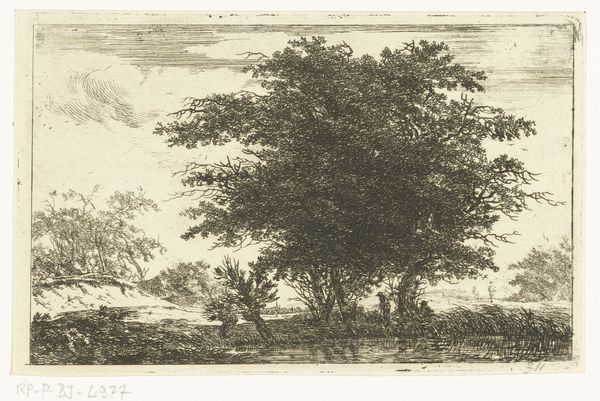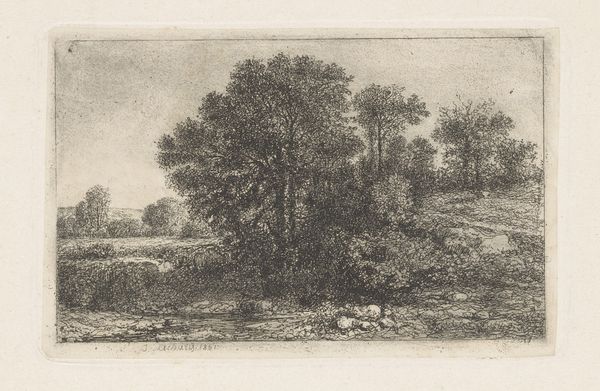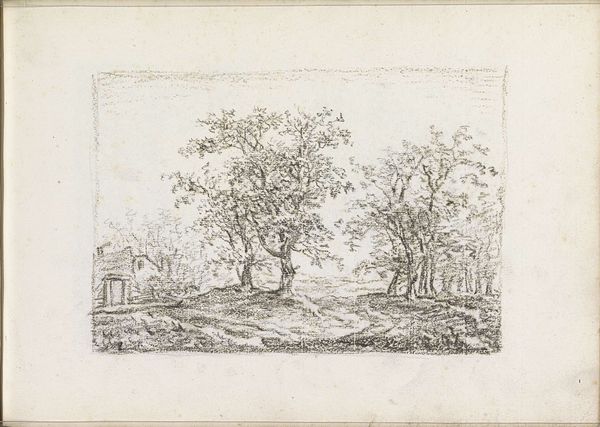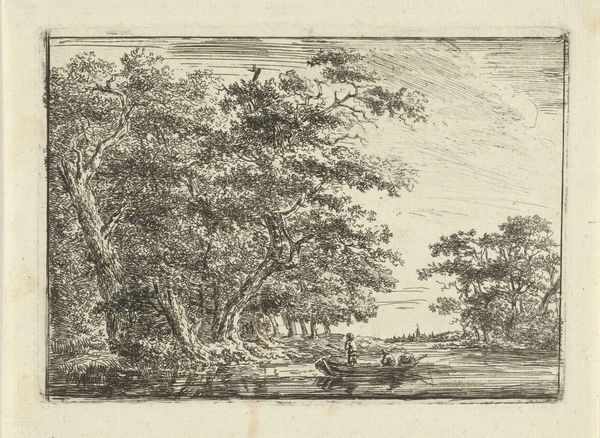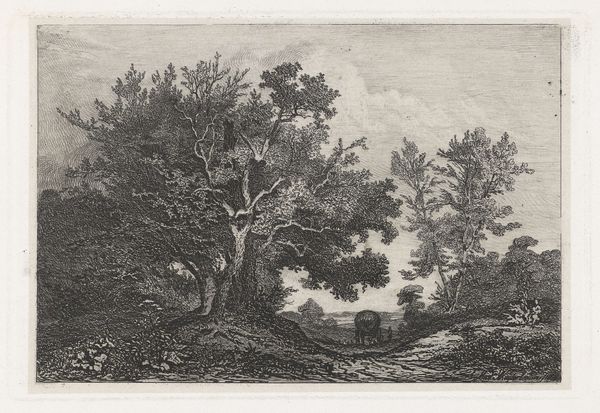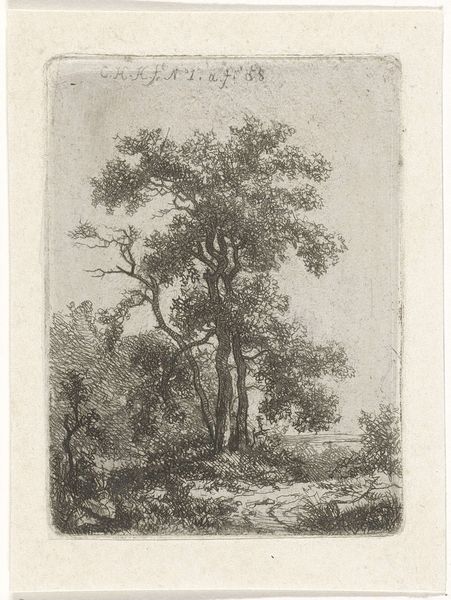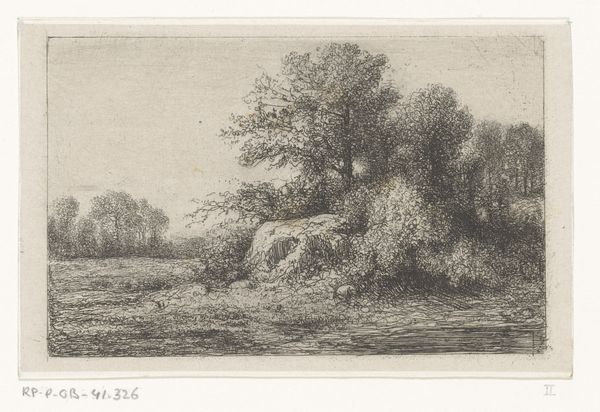
print, etching
#
tree
# print
#
etching
#
landscape
#
realism
Dimensions: height 148 mm, width 87 mm, height 136 mm, width 82 mm
Copyright: Rijks Museum: Open Domain
Editor: This etching by Jean Alexis Achard, probably made sometime between 1817 and 1884, is titled "Bomen op een vlakte" – that's "Trees in a Field." It’s so detailed, but also quite small and intimate. I’m immediately drawn to the foreground, with those dense scribbles making up the foliage. What's your interpretation of this kind of landscape art? Art Historian: It's a great observation about the scale and intimacy! These kinds of landscape prints were significant in democratizing art. Before photography became widespread, etchings like this made images accessible to a wider public. The detail you mention served a function. Do you see how it attempts to capture a sense of "truth" about nature, in a period when Realism was gaining momentum? How do you think the public received imagery like this? Editor: I suppose it would have felt more genuine than idealized landscapes, maybe more like a scene people recognized from their own lives? It is very different than grandiose paintings I am familiar with. Art Historian: Exactly! The rise of Realism corresponded with growing social awareness. Art began to depict everyday life, especially the lives of the middle class and rural populations. This print’s subject matter could suggest a desire to depict a "common" scene and elevate it to the level of art. Note also the composition, not particularly dramatic – a quiet field. Do you find a social or political message here, even subtly? Editor: I see what you mean. The absence of grand historical figures or mythological elements feels like a statement in itself. A focus on the everyday has its own inherent value. Perhaps Achard wanted to reflect a world as lived, by ordinary people, not as told in history books. I never would have guessed that so much could be read into trees in a field! Art Historian: Well, seeing art within its social and political context truly unlocks its deeper meanings. Understanding how art serves the public helps understand why this "simple" landscape matters. Editor: This has definitely changed how I'll look at landscapes from now on!
Comments
No comments
Be the first to comment and join the conversation on the ultimate creative platform.
